 Digital storytelling describes a simple, creative process through which people with little or no experience of computers gain skills needed to tell a personal story as a two-minute film using predominantly still images. These films can then be streamed on the web or broadcast on television.
Digital storytelling describes a simple, creative process through which people with little or no experience of computers gain skills needed to tell a personal story as a two-minute film using predominantly still images. These films can then be streamed on the web or broadcast on television.
 A digital storyteller can be anyone who has a desire to document life experience, ideas, or feelings through the use of story and digital media. Usually someone with little experience in video production but with time to spend a few days attending a workshop and developing a story with creative support and technical assistance from compassionate, experienced facilitators.
A digital storyteller can be anyone who has a desire to document life experience, ideas, or feelings through the use of story and digital media. Usually someone with little experience in video production but with time to spend a few days attending a workshop and developing a story with creative support and technical assistance from compassionate, experienced facilitators.
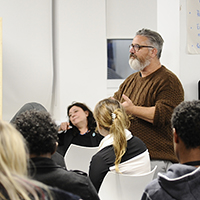 The uses of digital storytelling range from a means to express creativity, to a research method for local health issues or a means of preserving a community’s identity and a form of oral history. As a method, Digital Storytelling combines techniques to develop literacy and storytelling skills with an introduction to basic Information and Communication Technology (ICT), using group exercises and individual processes that develop confidence and build self-esteem.
The uses of digital storytelling range from a means to express creativity, to a research method for local health issues or a means of preserving a community’s identity and a form of oral history. As a method, Digital Storytelling combines techniques to develop literacy and storytelling skills with an introduction to basic Information and Communication Technology (ICT), using group exercises and individual processes that develop confidence and build self-esteem.
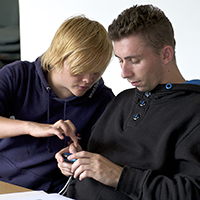 On the surface these digital stories are all singular, personal audio-visual accounts of an individual’s story, yet the making of them is shaped by the collaborative experience in the workshop. Each story shows how someone envisages their place in a personal and a public world.
On the surface these digital stories are all singular, personal audio-visual accounts of an individual’s story, yet the making of them is shaped by the collaborative experience in the workshop. Each story shows how someone envisages their place in a personal and a public world.
They all bridge the past, present and the future. Particular sets or groups of stories acquire a wider representative meaning and, in doing this, say something deeper about the place they come from. As Joe Lambert has expressed, “Digital storytelling has evolved to become an international movement of deeply committed folks working with story in virtually every field of human endeavour” (2013) Joe Lambert is director of the Center for Digital Story Telling (est. San Francisco 1993), and author of Digital Storytelling Cookbook, Digital Storytelling – Capturing Lives, Creating Community and Seven Ages of Story.
Methods and practices of digital storytelling
 Digital storytelling allows participants to: tell their own stories, learn digital media skills, build confidence and self-esteem. The method places the stories under the control of the storyteller
Digital storytelling allows participants to: tell their own stories, learn digital media skills, build confidence and self-esteem. The method places the stories under the control of the storyteller
Participants find digital storytelling fun: it is a way to reach people who think that education is ‘not for them’; it can help to develop language and literacy skills through storytelling and script-writing; it can give people a kick-start in developing their skills and improving their chances to gain employment; it offers a way to engage thoughtfully with experience.
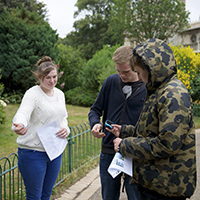 Digital storytelling has been used in health and teacher education for developing students’ professional identity, and as a tool for self reflection whereby students make and share digital stories about their practice experiences. As a practice it helps to foster higher-order thinking skills, develops digital literacy, and is, “the aggregating element capable of turning our students into true 21st century learners” (Ribeiro, 2012).
Digital storytelling has been used in health and teacher education for developing students’ professional identity, and as a tool for self reflection whereby students make and share digital stories about their practice experiences. As a practice it helps to foster higher-order thinking skills, develops digital literacy, and is, “the aggregating element capable of turning our students into true 21st century learners” (Ribeiro, 2012).
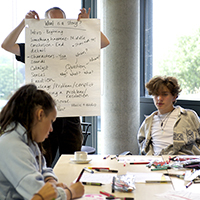 For the purposes of the digital storytelling workshops, a digital film is:
For the purposes of the digital storytelling workshops, a digital film is:
- a 2-minute film (~250 words)
- a personal story
- written, recorded and edited by the film maker
- uses photos/drawings by the film maker (10-30 photos)
- can also use video, animation and music
- any images or music have to be copyright free
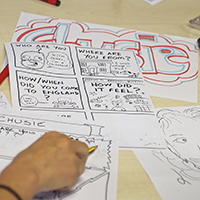 Digital storytelling workshops typically begin with a story circle, creating a trusting atmosphere and getting to know each other through activities. Story prompts are given eliciting concentrated thoughts as to the most powerful elements to be developed from a lifetime of memories. Storytelling exercises introduce method and encourage the sharing of material.
Digital storytelling workshops typically begin with a story circle, creating a trusting atmosphere and getting to know each other through activities. Story prompts are given eliciting concentrated thoughts as to the most powerful elements to be developed from a lifetime of memories. Storytelling exercises introduce method and encourage the sharing of material.
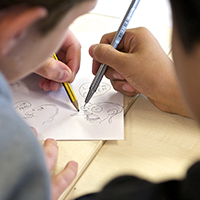 Participants are then introduced to the principles of narrative: narrator, voice, background. They also learn about camera work and film technique. Short scripts are written, following which the voiceovers are recorded.
Participants are then introduced to the principles of narrative: narrator, voice, background. They also learn about camera work and film technique. Short scripts are written, following which the voiceovers are recorded.
Participants scan photographs from albums or take new photos of people and objects. Others make images through drawing, make simple stop frame animations or computer software animations such as Adobe Flash.
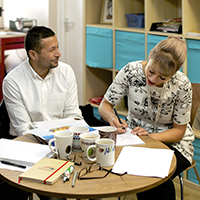 Participants then move to editing. The imagery and animation is built into a film editing software where it is combined with the voiceover. The results are then shared in the form of group shows, exhibitions in public spaces or online.
Participants then move to editing. The imagery and animation is built into a film editing software where it is combined with the voiceover. The results are then shared in the form of group shows, exhibitions in public spaces or online.
Research in Digital Storytelling
As a relatively new cultural form of cultural practice drawing on a range of different roots, practices and interests, digital storytelling has attracted attention from a range of scholars and researchers.
 One consequence of this is that literature, research and practice is limited and exploratory, as writers, practitioners and academics work their way towards a fuller, more rounded understanding. Drivers for individual projects are often drawn from different sources with a desire to use digital storytelling with particular groups or communities. Sennett (2012) notes how many community projects “offer good experiences” but “have to lead somewhere to become sustainable”.
One consequence of this is that literature, research and practice is limited and exploratory, as writers, practitioners and academics work their way towards a fuller, more rounded understanding. Drivers for individual projects are often drawn from different sources with a desire to use digital storytelling with particular groups or communities. Sennett (2012) notes how many community projects “offer good experiences” but “have to lead somewhere to become sustainable”.
This sense of immediacy is found in many digital storytelling projects where the short term benefits of the storytelling process are defined in terms of stories told or people trained. It is rare to find research which considers the content of digital stories or takes a longitudinal approach to the evaluation of the impact of attending a digital storytelling workshop on participants.
Source: http://arts.brighton.ac.uk/projects/silver-stories/how-can-we-understand-digital-storytelling
